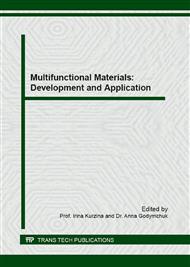p.3
p.9
p.15
p.22
p.30
p.36
p.44
p.53
Growth of Demand for Materials with New Properties in Foresight and Strategic Planning
Abstract:
The Russian Long-Term Science&Technology Foresight towards 2030 recognizes the critical importance of new materials in virtually all sectors of production, construction, medicine and services. This paper analyzes the essential terminological and content-related problems of foresight categories representation regarding new materials. Besides, the authors consider the development of further measures for direct and indirect (i.e. tax incentives) state support for economic development. The object of study is the science and technology categories “nanotechnologies”, “nanomaterials”, and “nanoproducts”. The study has been conducted using the method of critical technologies. The authors have revealed that the identification of the most promising areas of science and technology development in the framework of foresight, on the one hand, and tax incentives for research and development expenditures, on the other, are asymmetric. The asymmetry is content-related with regard to products and services and, temporal with regard to the duration period. What’s more, it is proposed to expand the current focus of the foresight studies in Russia and ensure that the scope of these studies comprises not only technology but also science and engineering.
Info:
Periodical:
Pages:
15-21
Citation:
Online since:
February 2016
Price:
Сopyright:
© 2016 Trans Tech Publications Ltd. All Rights Reserved
Share:
Citation:


